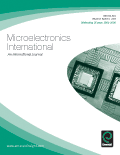
MICROELECTRONICS INTERNATIONAL
Scope & Guideline
Advancing microelectronics through rigorous research.
Introduction
Aims and Scopes
- Electronic Materials and Device Fabrication:
Research in this area includes the development and characterization of electronic materials such as ZnO, Ag-ZnO films, and various solder joints. It emphasizes innovative fabrication techniques and material properties that enhance device performance. - Thermal Management and Reliability Analysis:
This scope covers the thermal analysis of microelectronic systems, including packaging design and reliability evaluation under thermal stress. Studies often involve numerical simulations and experimental validations to optimize heat dissipation in devices. - Antenna Design and Wireless Communication:
The journal publishes significant work on the design of antennas for various applications, particularly in wireless communications, including 5G and IoT. Research focuses on improving performance metrics such as gain, bandwidth, and integration with circuits. - Advanced Packaging Technologies:
This area focuses on innovative packaging solutions for microelectronic components, including techniques for interconnections, thermal interface materials, and the integration of heterogeneous systems. It highlights the importance of reliability and performance in packaging. - Sensors and Actuators:
Research includes the development of novel sensors and actuators, often utilizing nanomaterials or innovative structures to enhance sensitivity and performance. This includes applications in environmental monitoring and biomedical fields. - Simulation and Modeling Techniques:
The journal emphasizes the use of advanced simulation and modeling techniques to predict the performance of microelectronic devices under various conditions. This includes finite element analysis, computational fluid dynamics, and other numerical methods.
Trending and Emerging
- 5G and Millimeter-Wave Technologies:
There is a growing emphasis on research related to 5G and millimeter-wave applications, particularly concerning PCB reliability and antenna design. This trend is crucial as the demand for high-speed wireless communication continues to rise. - Advanced Materials for Electronics:
Emerging materials such as ZnO, Ag-ZnO composites, and novel thermal interface materials are gaining attention, reflecting a trend towards exploring materials that enhance performance and reliability in microelectronic devices. - Integration of Renewable Energy Solutions:
Research exploring the integration of renewable energy systems, such as power converters and energy storage solutions, is increasingly prevalent. This trend aligns with global sustainability goals and the shift toward greener technologies. - Miniaturization and Flexible Electronics:
There is a notable increase in studies related to miniaturized and flexible electronic systems, including sensors and circuit designs that cater to the demands of wearable technology and portable devices. - Heterogeneous Integration Techniques:
Papers discussing heterogeneous integration methods, including advanced packaging and chiplet interconnection strategies, are on the rise, reflecting the industry's move toward creating more complex and multifunctional electronic systems.
Declining or Waning
- Traditional Circuit Design Techniques:
There has been a noticeable decrease in the publication of papers focused solely on traditional circuit design methodologies, as the field shifts towards more integrated and system-level approaches that consider multi-disciplinary factors. - Basic Semiconductor Physics:
Research centered on basic semiconductor physics concepts seems to be less prominent, possibly due to the increasing focus on applied research and device engineering, which emphasizes practical applications over fundamental studies. - Low-Power Analog Circuit Design:
Although low-power design remains important, the volume of publications specifically addressing low-power analog circuit techniques has diminished, likely as more researchers focus on digital and mixed-signal solutions that integrate well with modern digital systems. - Conventional Materials for Electronics:
Papers discussing conventional semiconductor materials are appearing less frequently, as emerging materials like 2D materials, organic semiconductors, and nanostructures gain more attention in the quest for enhanced device performance. - Static Reliability Testing:
The focus on static reliability testing methods for electronic components is waning, as the field increasingly recognizes the need for dynamic and real-world testing methodologies that better reflect actual operating conditions.
Similar Journals
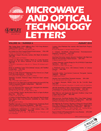
MICROWAVE AND OPTICAL TECHNOLOGY LETTERS
Fostering Innovation in Condensed Matter and BeyondMicrowave and Optical Technology Letters is a prestigious journal published by Wiley that serves as a vital platform for disseminating cutting-edge research in the fields of microwave and optical technology. Established in 1988, this journal has built a reputable presence, with its scope encompassing critical areas such as atomic and molecular physics, condensed matter physics, and electrical and electronic engineering. With a notable ranking in the Q3 quartile across multiple scientific categories, Microwave and Optical Technology Letters provides researchers, professionals, and students an invaluable resource to stay informed about the latest advancements and applications in these dynamic disciplines. Although the journal is not open access, its rigorous peer-review process ensures the highest quality of published content, contributing to an enriched academic dialogue. Researchers looking to enhance their knowledge in electronic, optical, and magnetic materials will find this journal particularly beneficial. For more information, please visit Wiley's official website or subscribe to stay updated on the latest volumes.
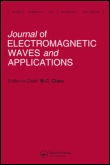
JOURNAL OF ELECTROMAGNETIC WAVES AND APPLICATIONS
Illuminating the Spectrum of Electromagnetic ResearchJournal of Electromagnetic Waves and Applications, published by Taylor & Francis Ltd, is a prestigious interdisciplinary journal that focuses on the rapidly evolving fields of electromagnetic waves and their applications. Since its inception in 1987, this journal has served as a vital resource for researchers, practitioners, and students interested in the latest advancements in electrical and electronic engineering, as well as materials science. The journal holds a respectable Q3 ranking in Electrical and Electronic Engineering and Electronic, Optical, and Magnetic Materials, and Q2 in Physics and Astronomy according to the 2023 category quartiles. With a dedicated readership, it aims to publish high-quality research articles that foster innovation and knowledge sharing among the scientific community. Despite not being open access, the journal ensures widespread availability of its insightful content aimed at pushing the boundaries of knowledge in the electromagnetic spectrum. As a crucial platform for disseminating cutting-edge research, the Journal of Electromagnetic Waves and Applications continues to contribute significantly to the advancement of technology and materials science.

MICROWAVE JOURNAL
Connecting Professionals through Cutting-edge InsightsMicrowave Journal, published by Horizon House Publications Inc, is a well-established platform in the field of Electrical and Electronic Engineering, specifically focusing on the advancements and applications of microwave technology. Since its inception in 1969, the journal has consistently delivered high-quality research, making it an invaluable resource for professionals, researchers, and students alike. Despite its Q4 ranking in Scopus for 2023, the journal plays a crucial role in disseminating knowledge and fostering innovation within its niche, showcasing developments across various areas including microwave systems, components, and applications. Although it does not offer Open Access, the journal’s comprehensive insights and peer-reviewed articles are essential for anyone looking to deepen their understanding of microwave engineering. By maintaining a rigorous editorial standard, Microwave Journal continues to shape the discussion and evolution of microwave technology.
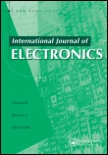
INTERNATIONAL JOURNAL OF ELECTRONICS
Fostering Excellence in Electrical and Electronic ResearchINTERNATIONAL JOURNAL OF ELECTRONICS, published by Taylor & Francis Ltd, is a pivotal platform for disseminating cutting-edge research in the field of Electrical and Electronic Engineering. With a rich publication history dating back to 1965, this journal is renowned for its rigorous peer-review process and its commitment to advancing knowledge across vital areas such as circuit design, communications, and microelectronics. Although it currently holds a Q3 quartile ranking in the category, the journal's broad scope and inclusion of contemporary research trends play a crucial role in shaping the future of electronics. Its ISSN (0020-7217) and E-ISSN (1362-3060) ensure that both print and digital versions are accessible. Researchers, professionals, and students alike can benefit from the journal’s valuable insights and findings contributing to advancements in technology and engineering. With its continuously evolving focus, the INTERNATIONAL JOURNAL OF ELECTRONICS stands as a significant resource in the academic landscape of electronic engineering.
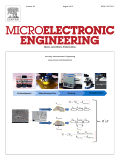
MICROELECTRONIC ENGINEERING
Transforming Ideas into Breakthroughs in Microelectronic TechnologiesMICROELECTRONIC ENGINEERING is an esteemed journal published by Elsevier, focusing on the rapidly evolving fields of microelectronics and nanotechnology. It encompasses a wide array of topics, including atomic and molecular physics, condensed matter physics, and the engineering aspects of electronic, optical, and magnetic materials. With its impressive impact factor and recognition as a Q2 journal in several categories, it provides an invaluable platform for researchers and professionals to disseminate their groundbreaking findings. The journal has been instrumental in advancing our understanding and application of microelectronic technologies since its inception in 1983. Currently ranked highly within various specialized categories in Scopus, MICROELECTRONIC ENGINEERING offers targeted access to cutting-edge research, fostering innovation and collaboration in the world of electronic engineering and materials science. As we look towards the future, with convergence continuing to shape research until 2024, the journal remains a critical resource for those dedicated to pushing the boundaries of knowledge in these dynamic fields.

ACS Applied Electronic Materials
Exploring the Future of Electronic MaterialsACS Applied Electronic Materials, published by the American Chemical Society, is a prominent journal in the field of applied materials science, with a particular focus on electronic, optical, and magnetic materials. Established in 2019, this journal has quickly risen to prominence, achieving a 2023 ranking of Q1 in both Electronic, Optical and Magnetic Materials and Materials Chemistry, as well as Q2 in Electrochemistry, reflective of its high-quality contributions and significant impact within the scholarly community. With an impressive Scopus rank of #22 in Electrochemistry, #59 in Electronic, Optical and Magnetic Materials, and #75 in Materials Chemistry, ACS Applied Electronic Materials serves as an essential resource for researchers, professionals, and students seeking to explore innovative advancements in the field. While the journal is not open access, it offers robust subscription options and aims to foster the dissemination of cutting-edge research articles, reviews, and technical notes that contribute to the understanding and application of electronic materials in various technological contexts. As a platform for pioneering research and cross-disciplinary dialogue, this journal is indispensable for anyone invested in the future of materials science.
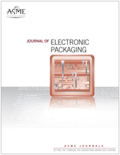
JOURNAL OF ELECTRONIC PACKAGING
Connecting Knowledge in Electronics and Materials ScienceJOURNAL OF ELECTRONIC PACKAGING, published by the esteemed American Society of Mechanical Engineers (ASME), is a pivotal platform for research in the fields of Computer Science Applications, Electrical and Electronic Engineering, and Materials Science, particularly focusing on electronic packaging technologies. With an ISSN of 1043-7398 and an E-ISSN of 1528-9044, this journal has consistently showcased groundbreaking studies since its inception in 1989, projected to continue until 2025. Recognized within the Q2 quartile rankings across multiple categories in the 2023 Scopus rankings, it maintains a strong presence in the academic community with notable rankings in various engineering and materials science domains. This journal serves as a critical resource for researchers, professionals, and students who seek to advance their understanding and application of innovative electronic packaging solutions. Though it does not offer open access, it encompasses a robust array of high-quality articles that foster knowledge advancement and interdisciplinary collaboration in a rapidly evolving technological landscape, ultimately contributing to the growth and sophistication of the electronic packaging field.
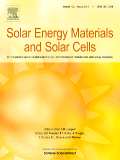
SOLAR ENERGY MATERIALS AND SOLAR CELLS
Innovating Materials for a Sustainable TomorrowSOLAR ENERGY MATERIALS AND SOLAR CELLS is a distinguished academic journal published by Elsevier, based in the Netherlands, focusing on innovative research in the fields of materials science and renewable energy. With a substantial history dating back to 1970, the journal has evolved into a premier platform for disseminating advanced studies related to solar energy technologies, including the development and optimization of solar cells and materials. Recognized for its high impact, the journal maintains a Q1 ranking across multiple relevant categories such as Electronic, Optical and Magnetic Materials, Renewable Energy, Sustainability and the Environment, and Surfaces, Coatings, and Films. It ranks impressively within the top tiers of Scopus, showcasing its influence and relevance in the scientific community. Although it does not offer open access, the journal remains a crucial resource for researchers, professionals, and students aiming to contribute to the advancement of sustainable energy technologies and materials innovation.
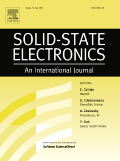
SOLID-STATE ELECTRONICS
Bridging Theory and Application in ElectronicsSOLID-STATE ELECTRONICS, published by Pergamon-Elsevier Science Ltd, is a highly regarded journal committed to advancing the field of solid-state physics and its applications. With an ISSN of 0038-1101 and an E-ISSN of 1879-2405, this journal has been a cornerstone of scholarly communication since its inception in 1960. Covering a rich spectrum of topics, it features in the Q3 category for Condensed Matter Physics, Electrical and Electronic Engineering, and Materials Science, reflecting its robust engagement in these critical fields. Despite not being an open-access journal, it provides valuable insights and research findings accessible to both academia and industry professionals, ensuring the dissemination of cutting-edge knowledge. With a strong focus on empirical research and theoretical developments, SOLID-STATE ELECTRONICS aims to bridge the gap between fundamental science and practical application, making it an essential resource for researchers, professionals, and students alike in the United Kingdom and beyond.
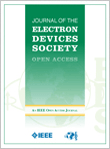
IEEE Journal of the Electron Devices Society
Connecting Academia and Industry in Electron DevicesIEEE Journal of the Electron Devices Society is a premier open-access publication dedicated to the advancement of knowledge in the field of electron devices. Published by the IEEE Institute of Electrical and Electronics Engineers Inc, this journal has been contributing essential research to the scientific community since 2013, reflecting its commitment to fostering innovation and development in the industry. With a notable impact factor that places it in reputable category quartiles—Q3 in Biotechnology and Q2 in both Electrical and Electronic Engineering and Electronic, Optical, and Magnetic Materials—this journal stands as a respected outlet for cutting-edge studies. Positioned among the top-ranked journals in its respective categories, including a Scopus rank of #90 in Electronic, Optical and Magnetic Materials, it serves as a vital resource for researchers, professionals, and students alike. The open-access model enhances the journal's accessibility, allowing for widespread dissemination of crucial findings and innovations in electron device technologies. Whether you are engaged in academia or industry, the IEEE Journal of the Electron Devices Society is essential for remaining at the forefront of advancements in this dynamic field.